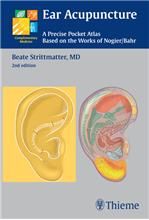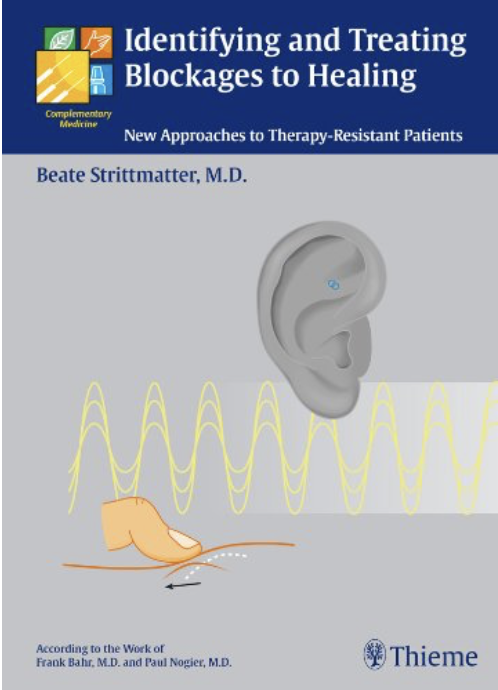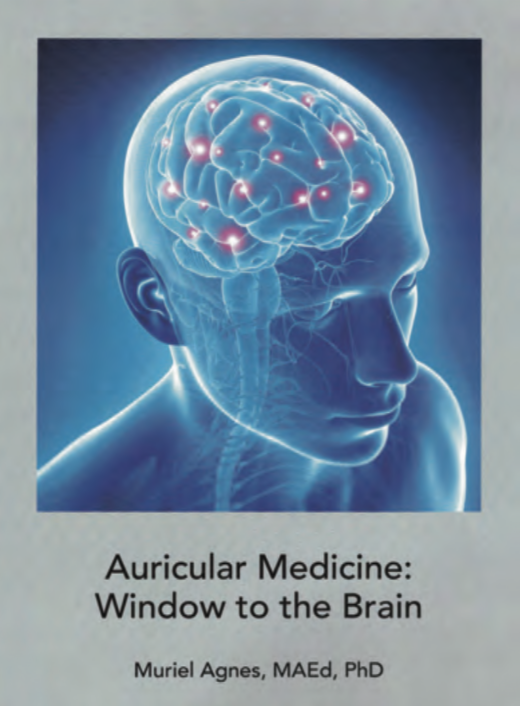A Window to the Brain: Why auricular methods are applied in today’s healthcare
The microsystem of the ear offers a window to the brain — insight to the emotional and physical states of the body.[1] The ear presents medical professionals (not just acupuncturists) the opportunity for neuromodulation and treatment, whether by electro-stimulation, low level laser therapy, acupressure or acupuncture. Auricular methods are applied in medical practices worldwide and recognized by the National Acupuncture Detoxification Association (NADA), the World Health Organization (WHO),[2] and other institutional bodies.
Read more below on the definition of Auricular Medicine, the reason seasoned clinicians specifically choose CIAM for their training in Auricular Methods and Auricular Medicine — and to build the bridge between conventional and complimentary medicine for integrative healthcare solutions to healing.
Read more below on the definition of Auricular Medicine, the reason seasoned clinicians specifically choose CIAM for their training in Auricular Methods and Auricular Medicine — and to build the bridge between conventional and complimentary medicine for integrative healthcare solutions to healing.
9 Examples across various healthcare settings
University Medical Centers & Private Hospitals
UC Health and Hadassah Medical Center are examples of leading hospitals applying auricular methods for integrative healthcare.
Military Field Medicine
U.S. Army Health Clinic Traumatic Brain Injury Department trains nurses, medics and physicians at the U.S. Army Health Clinic complete training in the auricular methods of Battlefield Acupuncture.
Government Healthcare Systems
Hospitals of the Department of Veterans Affairs (DoVA) and Department of Defense (DoD), such as the Durham VA and Walter Reed Medical Center, are using auricular acupuncture to reduce opioids in the management of pain and Post-traumatic Stress Disorder.
Pain Management Centers
Whether at the Defense & Veterans Center for Integrative Pain Management or the Vanderbilt Interventional Pain Clinic, auricular methods are proven effective for chronic pain.
Healthcare Networks and Community-based Healthcare Delivery
The University Health Network of Toronto Addictions Program and organizations such as People’s Organization of Community Acupuncture, use auricular methods in the treatment of substance abuse and more.
Research for Development of New Therapeutics
In fields such as neurology, psychology, bioelectric medicine, and laser therapy, a growing body of research into interception has applied Vagus Nerve Stimulation via the ear to modulate bodily signals. Such research has led, and continues to lead, to new developments in medical devices and therapies.
Rehabilitation and Long-Term Care Facilities
Auricular methods, even if only protocol-based, as offered (for example) in the Theodor Fliedner Stiftung, offer treatment for pain, stress, addiction, insomnia and more — and overall improvement in quality of life.
Mental Health Clinics, and other clinics — from Psychiatry to Physiotherapy
From Connecticut (i.e. Yale School of Medicine SATU Clinic) to clinics in Germany using therapeutic laser, auricular methods are helping patients in clinics across various fields of healthcare and wellness practice.
Healthcare & Wellness Education
From certifying bodies (i.e. NCCAOM), to leading associations (i.e. CSOMA), to professional development providers (i.e. Goudse Academie, Deutsche Akademie für Akupunktur), to the referral from leading medical laser manufacturers (i.e. RJ Laser), Auricular Medicine is internationally recognized and taught.
Auricular Medicine Succinctly Defined
This medicine is among several analogous fields of auricular approaches that use the microsystem of the ear, including: protocol-based techniques (such as Battlefield Acupuncture and AcuDetox), therapies (such as Auriculotherapy), reflexology (such as Auricular Acupressure), nerve stimulation (such as taVNS), and methods originating from Traditional Chinese Medicine (such as Ear Acupuncture).
Auricular Medicine is different from these fields in that it allows practitioners to identify, assess, and prioritize active neurological reflex zones — all to help remove the underlying conditions that create therapy resistance, as well as provide insight for treatment guidance toward improved healing outcomes. Auricular Medicine includes the clinical use of...
- Medical frequencies (such as focus, i.e. “blockage,” indicators)
- Vascular Autonomic Signal (VAS) palpation
- Diagnostic and therapeutic laser
- Both anatomical and functional reflex zones (incl. medical analogue and emotional)
University Medical Centers & Private Hospitals
UC Health and Hadassah Medical Center are examples of leading hospitals applying auricular methods for integrative healthcare.
Military
Field Medicine
U.S. Army Health Clinic Traumatic Brain Injury Department trains nurses, medics and physicians at the U.S. Army Health Clinic in the auricular methods of Battlefield Acupuncture (photo: ©U.S. Army)
Government
Healthcare Systems
Hospitals of the Department of Veterans Affairs (DoVA), such as the Durham VA, are using auricular acupuncture to reduce opioids in the management of pain and Post-traumatic Stress Disorder.
Pain Management
Centers
Whether at the Defense & Veterans Center for Integrative Pain Management or the Vanderbilt Interventional Pain Clinic, auricular methods are proven effective for chronic pain. (photo: ©Susan Urmy)
Healthcare Networks and Community-based Healthcare Delivery
The University Health Network of Toronto Addictions Program and organizations such as People’s Organization of Community Acupuncture, use auricular methods in the treatment of substance abuse and more.
Research
for Development of
New Therapeutics
In fields such as neurology and psychology, research into interception has applied Vagus Nerve Stimulation via the ear to modulate bodily signals. Such research has led, and continues to lead, to new developments in medical devices and therapies.
Rehabilitation and
Long-Term Care
Facilities
Auricular methods, even if only protocol-based, as offered (for example) in the Theodor Fliedner Stiftung, offer treatment for pain, stress, addiction, insomnia and more — and overall improvement in quality of life.
Health Clinics — from Physiotherapy to Psychiatry
From Connecticut (i.e. Yale School of Medicine SATU Clinic) to clinics in Germany using therapeutic laser, auricular methods are helping patients in clinics across various fields of healthcare and wellness practice.
Seasoned practitioners choose CIAM training to discover new pathways for healing...
particularly for therapy resistant patients. By integrating Auricular Medicine into their practice, they have a new tool to support insights and treatment for an improved healing process.
How? The deep insight for prioritized treatment of what ails the entire body has its basis in neurology. “The ear, the auricle, is a window to the brain, showing us a dynamic, current reflection of what is happening in the whole brain, making the structures and functions of the person visible and accessible to the trained practitioner.”[1] (p.1) As such, Auricular Medicine offers insight into, and a gateway for treatment of the central nervous system. It is a form of “non-invasive neuromodulation, meaning we can modulate deep regions of the brain - safely and precisely.”[1] (p.7)
This opportunity for neuromodulation is what makes Auricular Medicine a treatment of choice for a range of hard-to-treat conditions such as chronic pain, hormonal disorders, psychological trauma and stress disorders.
This opportunity for neuromodulation is what makes Auricular Medicine a treatment of choice for a range of hard-to-treat conditions such as chronic pain, hormonal disorders, psychological trauma and stress disorders.
Bridging conventional and alternative medicine: energy, balance and health
Supportive of other
healing modalities
Advances in scientific research continue to bring once seemingly disparate modalities of medicine closer together. In particular, insights from neuroscience, cellular biology, and quantum sciences provide frameworks for understanding commonalities between conventional and alternative approaches. We are learning that, ultimately everything is energy.
Auricular Medicine offers a bridge amongst modalities due to the essential role of neuromodulation. By integrating auricular, you can identify and support interventions that stimulate energy homeostasis, or balance, thereby supporting an efficient healing process, as well as amplifying responsiveness to other healing modalities.
Integrative
and holistic
In the most simple terms, energy affects the way in which we exist in our environment (at peace or in disharmony), our physiological state (in balance or out of balance), and our consciousness or perception of reality (regulation of learning, memory and cognitive processes). Conventional medicine has shifted from a view of the human body as a machine with disparate moving parts (in which disease is isolated from overall health) to a view of the human body as an electro-chemically regulated entity (whose well being is considered holistically to include environment and state of mind). Whether we affect our physiology and psychology with nutrition, pharmaceuticals, acupuncture, yoga, or even spiritual practice, we are in essence just using different methods to achieve a common goal: an improved state of being — regulation of energy homeostasis.
Scientifically
Validated
Neuromodulation techniques implemented from the outer ear have been scientifically validated.[3] Decades of clinical application and research present Auricular Medicine as a window to the brain because of the ability to affect the central nervous system,[1] which is at the core of the regulation of energy homeostasis.[4] Everything is energy, and as such, everything also has a frequency. German Auricular Medicine, in particular because of its development of frequency-based methods, provides for sophisticated assessment and treatment insights. The use of frequencies to test substances for resonance against a patient’s somatotopy (the point-for-point correspondence of an area of the body to a specific point on the central nervous system) and interoception, enables practitioners to test the ideal location and frequency for treatment.
Integrate Auricular in your practice with comprehensive Auricular Medicine education
Since 2003, the Canadian Institute of Auricular Medicine (CIAM) has been a highly recognized continuing education provider — praised for its practical CORE Curriculum and endorsed by Dr. Beate Strittmatter, MD, Director of Education at the Deutsche Akademie für Akupunktur (DAA) as the “only systematic training of the DAA program in the English language offered worldwide.”


English language texts for Auricular Medicine include the internationally published Pocket Atlas based on the works of Dr. Frank Bahr and Dr. Paul Nogier...
Dr. Beate Strittmatter, MD

...the manual to Auricular Medicine, Identifying and Treating Blockages to Healing: New Approaches to Therapy-Resistant Patients...
Dr. Beate Strittmatter, MD

...and the companion text for auricular practitioners, Auricular Medicine: Window to the Brain
Dr. Muriel Agnes, PhD, MAEd
Sign-in and visit FREE course sections, resources and more...
References:
[1] Agnes, Muriel. Auricular Medicine: Window to the Brain. Blurb, 2018
[2] Shang, C. Mechanism of Acupuncture - Beyond Neurohumoral Theory. Medical Acupuncture Journal. 2000; 11(2), 61-70.
[3] Mercante, B., et. al. “Auricular Neuromodulation: The Emerging Concept beyond the Stimulation of Vagus and Trigeminal Nerves.” Medicines, March (2018). https://www.ncbi.nlm.nih.gov/pmc/articles/PMC5874575/#__ffn_sectitle
[4] Luquet, S. "The central nervous system at the core of the regulation of energy homeostasis." Front BioSci School Ed, (2009). https://www.ncbi.nlm.nih.gov/pubmed/19482713
